Although phased array has many advantages over other NDT methods for weld inspection, it still has similar restrictions as conventional ultrasonic testing when dealing for anisotropic materials. Materials such as stainless steel can cause problems for ultrasonic methods, as the grain structure is not homogenous and can also be quite coarse. These features can affect attenuation and cause problems such as scatter and beam steering.
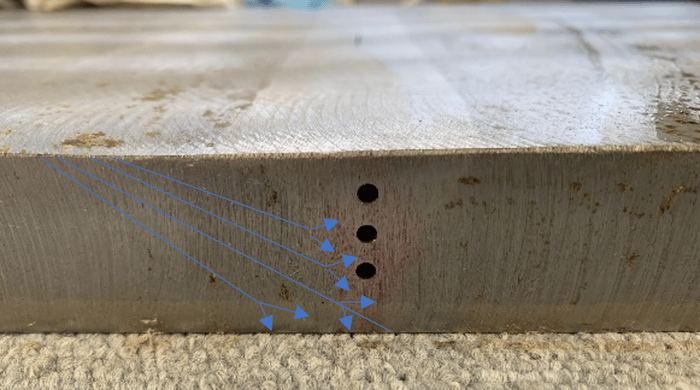
Figure 1: Scattered Sound Beam
The beam steering and scatter is most prominent when using a probe in shear wave mode, which is the most common wave mode for testing carbon steel welds. Although lower frequency shear wave can be considered, it is most likely that the phased array technique for stainless steel welds will involve using angled compression waves. Compressional waves have a more favorable wave propagation, and with double the wavelength, is less affected by the coarse grain structure of the welds.
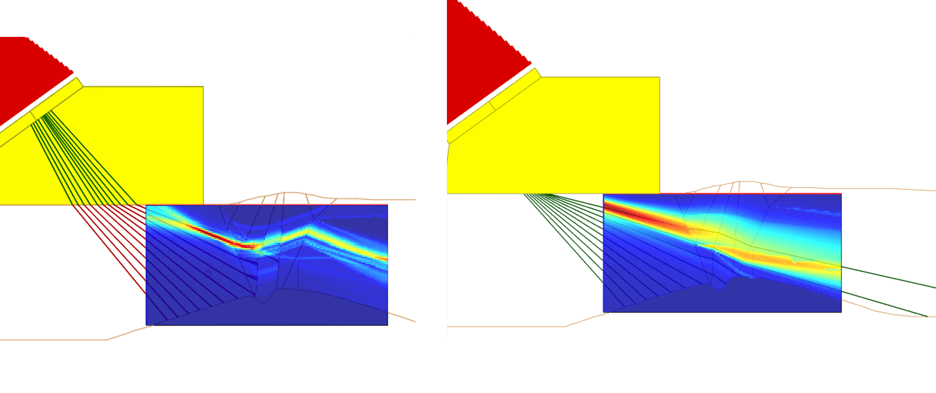
Figure 2: Comparison of Shear Wave (left) and Angled Compression (right)
The story doesn’t just end there unfortunately. Angled compression shows a significant improvement for sound propagation but has one critical limitation. With a shear wave beam, the sound can skip from the internal surface of a pipe and bounce up into the weld for interrogation. This skipping setup is what is typically used to gain 100 percent coverage of the weld.
 Figure 3: Shear Wave Phased Array Setup; Skipping Sound from the Internal Surface Covering the Full Weld Volume
Figure 3: Shear Wave Phased Array Setup; Skipping Sound from the Internal Surface Covering the Full Weld Volume
With angled compression waves, we are not able to skip from the surface, as when the beam interacts with a boundary it causes mode conversion and unwanted signals. Therefore, when scanning with angled compression, all inspection must be completed on the first pass and the weld is inspected directly.
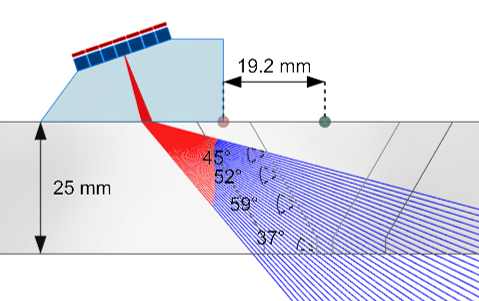
Figure 4: Angled Compression Setup on the First Pass (no skip)
As seen in figure 4, the probe on the first pass inspection must be much closer to the weld and this causes a potential dead zone at the surface. All is not lost though; this dead zone can be covered by either scanning on both surfaces which is often possible on large structures such as tanks, or by introducing a creep wave setup in the scan which is very sensitive to surface defects and can cover the top dead zone.
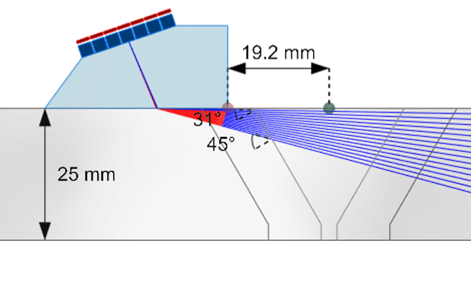
Figure 5: Creep Wave Setup
To achieve all of the above, the industry now offers a unique set of phased array probes that are designed specifically for stainless steel inspection. These probes, typically referred to as Dual Matrix Array (DMA) probes, use two rows of elements on a dedicated wedge with one row of elements sending the sound and the other row receiving. The rows of elements in these probes are not linear and are actually diced in two orientations. This design not only allows for increased Signal-to-Noise Ratio (SNR) through the weld material, but also provides the ability to focus on numerous orientations.
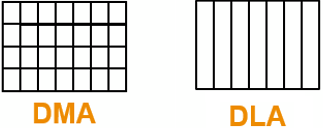
Figure 6: Phased Array Element Arrangements for a Dual Matrix Array (left) and Standard Linear Array (right)
The next part is an interesting with some examples of the data achieved from DMA probes through dissimilar metal welds. To be able to determine detectability and coverage, it is important to fabricate calibration and reference blocks made from the exact same material as the field welds. These reference blocks are then cut into coupons and calibration reflectors such as side drilled holes and surface notches are added. These coupons are then used to determine technique setup but are also used on the project for daily probe checks and sensitivity calibration.

Figure 7: Angled Compression Probe on Stainless Steel Calibration Block Showing Excellent SNR and Detection of the Reference Reflectors
The final consideration for this type of inspection is the mechanical scanner. Unfortunately, most weld scanners are designed to be used on carbon steel material with a magnetic wheel system. As stainless steel is nonmagnetic, an advanced modular ultrasonic inspection scanner built for phased array (PAUT) corrosion mapping and PAUT/Time-of-Flight-Diffraction (TOFD) is required. The system allows operators to switch between weld inspection and advanced corrosion mapping rapidly.
In this instance and for pipe welds, we recommend using the chain scanner; this scanner has all the benefits of the weld inspection configuration and provides stability when scanning nonmagnetic materials.
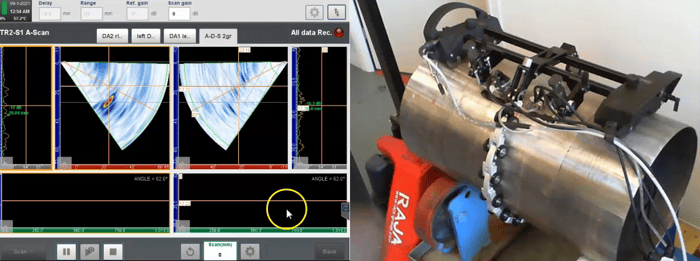
Beyond stainless steel, the inspection scanning solution is applicable for high-density polyethylene (HDPE) pipework. Paired with world class portable PAUT instruments offering Total Focusing Method (TFM) and Plane Wave Imaging (PWI) like Cypher®, operators can truly optimize their HDPE ultrasonic inspections.
In conclusion, phased array is most certainly becoming the method of choice for weld fabrication and has replaced radiography for many inspection projects (just check out this blog on 3 weld inspection challenges solved by advanced UT in lieu of radiography). Although assessment is possible on non-homogenous materials, the operator must carefully select the probes, have experience in calibration requirements, and choose a scanner that provides stability and probe accuracy when the surface in nonmagnetic.
Eddyfi Technologies is committed to delivering the best of all worlds to ensure inspectors can collect the data required for actionable insights. Contact our team of experts to discuss your next inspection campaign and learn how to stay Beyond Current.




